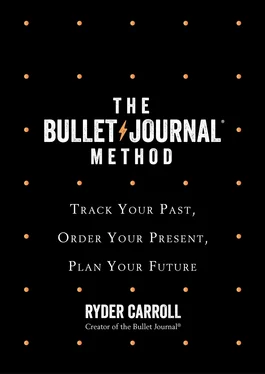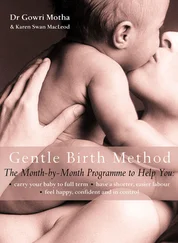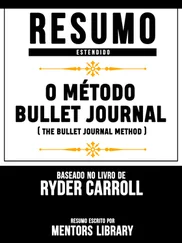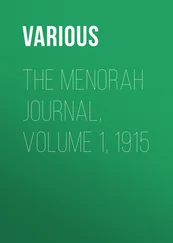Now you may be asking, Why didn’t we just do this in our notebook? It’s a fair question. As you read this book, ponder the ideas, and try out the techniques, you might find yourself paring back your Mental Inventory even more. When you christen your Bullet Journal, you should do so with only things that you believe are important or will add value to your life. Being intentional about what you let into your life is a practice that shouldn’t be limited to the pages of your notebook.
Journal writing is a voyage to the interior.
—CHRISTINA BALDWIN
People who are new to BuJo often ask about the notebook. Can’t we just use an app for keeping lists? The short answer is sure. In fact, there are a lot of good productivity apps out there. I worked on some myself! As a digital product designer, I can fully appreciate how powerful and effective digital tools can be. In fact, the Bullet Journal was designed using some methodologies leveraged in software development. That said, there’s a lot more to Bullet Journaling than keeping lists. It’s a comprehensive methodology designed to help us capture, order, and examine our experience. As you move through this book, you’ll see exactly how and why your notebook will serve you well in this regard. Here, we’ll look at the foundational reasons behind the notebook.
Technology removes barriers and distances between people and information. We can learn about almost anything, or communicate with anyone, at any time, from anywhere, just by tapping our phone. It’s a convenience that we avail ourselves of, on average, every 12 minutes! 12 All of this convenience, however, comes at a price—and I don’t mean the cost of your data plan, your cable bundle, or the pieces of your soul you sacrifice as you try to reason with your provider’s customer service.
In a world where Wi-Fi boosters are attached to church steeples, no place remains sacred. 13 From the boardroom to the bathroom, technology has flooded our lives with more content than we can possibly absorb, washing away our attention spans in the process. Studies suggest that your concentration suffers simply by having your smartphone in the room with you, even if it’s silent or powered off! 14
In 2016, the average American spent nearly eleven hours in front of digital screens each day. 15 Factoring in six to eight hours of sleep (which is also compromised by our phones 16 ), we’re left with around six hours of non-screen time per day. Now consider the time spent commuting, cooking, and running errands, and you can see where this is headed: We’re steadily decreasing the amount of time we have to stop and think.
Sitting down with your notebook grants you that precious luxury. It provides a personal space, free from distraction, where you can get to know yourself better. This is one of the main reasons we use a notebook to Bullet Journal: It forces us to go offline.
Our notebook serves as a mental sanctuary where we are free to think, reflect, process, and focus.
The blank pages of your notebook offer a safe playground for your mind, where you’re completely free to express yourself without judgment or expectation. As soon as you put pen to paper, you establish a direct link to your mind and often your heart. This experience has yet to be properly replicated in the digital space. It’s why, to this day, so many ideas are born on scraps of paper.
Another reason we use notebooks? Flexibility. Software tends to be either so powerful that its wealth of features is buried to all but the most intrepid explorers (think Excel) or so specific that it sacrifices features for increased usability, essentially doing few things very well (think mobile apps). In both cases, they force you to operate within a framework of their choosing. This is the main challenge with many productivity systems: They struggle to address the limitless variability and evolutionary nature of our individual needs. Notebooks, in contrast, are beholden to their authors. Their function is limited only by the imagination of their owner.
The power of the Bullet Journal is that it becomes whatever you need it to be, no matter what season of life you’re in.
In school, it can serve for your class notes. At work, it can be a tool to organize your projects. At home, it can help you set and track your goals. Robyn C., for example, was able to meditate for 432 consecutive days by designing a meditation tracker in her Bullet Journal. She did the same when trying to figure out what triggered her sleeping disorder. I didn’t invent her tools; she did.
Because of the way the Bullet Journal is structured, it can be multiple things at the same time. Rather than a tool, think of it as a tool kit. It allows you to funnel a lot of your productivity needs into one place. You’ll enjoy a more comprehensive perspective on your life, one that can allow you to spot unconventional connections. As Bullet Journalist Bert Webb put it: “As I do daily, weekly, and monthly reviews, leafing forward and backward in my Bullet Journal, my brain inevitably makes more links between ideas that I was not able to do when using my various separate digital tools.”
The other great thing is that you start fresh each day. With digital trackers, you step onto their track—somewhere in the middle of the endless race that started when you set up the tracker and ends . . . ? Your notebook greets you each morning with the pure, blank slate of an empty page. It serves as a small reminder that the day is as yet unwritten. It will become what you make of it. As Bullet Journalist Kevin D. notes: “I used to feel bad about items undone at the end of the day, but with the Bullet Journal I feel empowered to move yesterday’s open bullets forward to a new page, because I see each day as a fresh start.”
Finally, your notebook evolves as you do. You might say that you co-iterate. It will conform to your ever-changing needs. The lovely side effect is that as the years pass, you’re creating a record of your choices, and the ensuing experiences. As Bullet Journalist Kim Alvarez once put it, “Each Bullet Journal contributes another volume to a library of your life.” In the pursuit of meaning, this library becomes a powerful resource to have at your disposal.
By recording our lives, we’re simultaneously creating a rich archive of our choices and our actions for future reference. We can study our mistakes and learn from them. It’s equally instructive to note our successes, our breakthroughs. When something works professionally or personally, it helps to know what our circumstances were at the time and what choices we made. Studying our failures and our victories can provide tremendous insight, guidance, and motivation as we plot our way forward.
So are the Bullet Journal method and apps mutually exclusive? Of course not. There are many apps that make my life easier in ways that a notebook never could. All tools, whether digital or analog, are only as valuable as their ability to help you accomplish the task at hand. The goal of this book is to introduce you to a new tool kit for your workshop—one that has proven effective at helping countless others tackle the often ungainly project called life.
The palest ink is better than the best memory.
—CHINESE PROVERB
We breathe life into our thoughts by committing them to paper. Be they words, images, or notes, few tools facilitate the transition between the inner and outer worlds as seamlessly as the tip of a pen. In a world moving toward untextured interfaces, it may seem like an awkward step backward to implement a methodology that requires you to write things out the old-fashioned way. But a growing body of research points to the continued practicality of the handwritten word in our digital age.
Читать дальше


![Райдер Кэрролл - Bullet Journal метод [litres]](/books/407399/rajder-kerroll-bullet-journal-metod-litres-thumb.webp)









